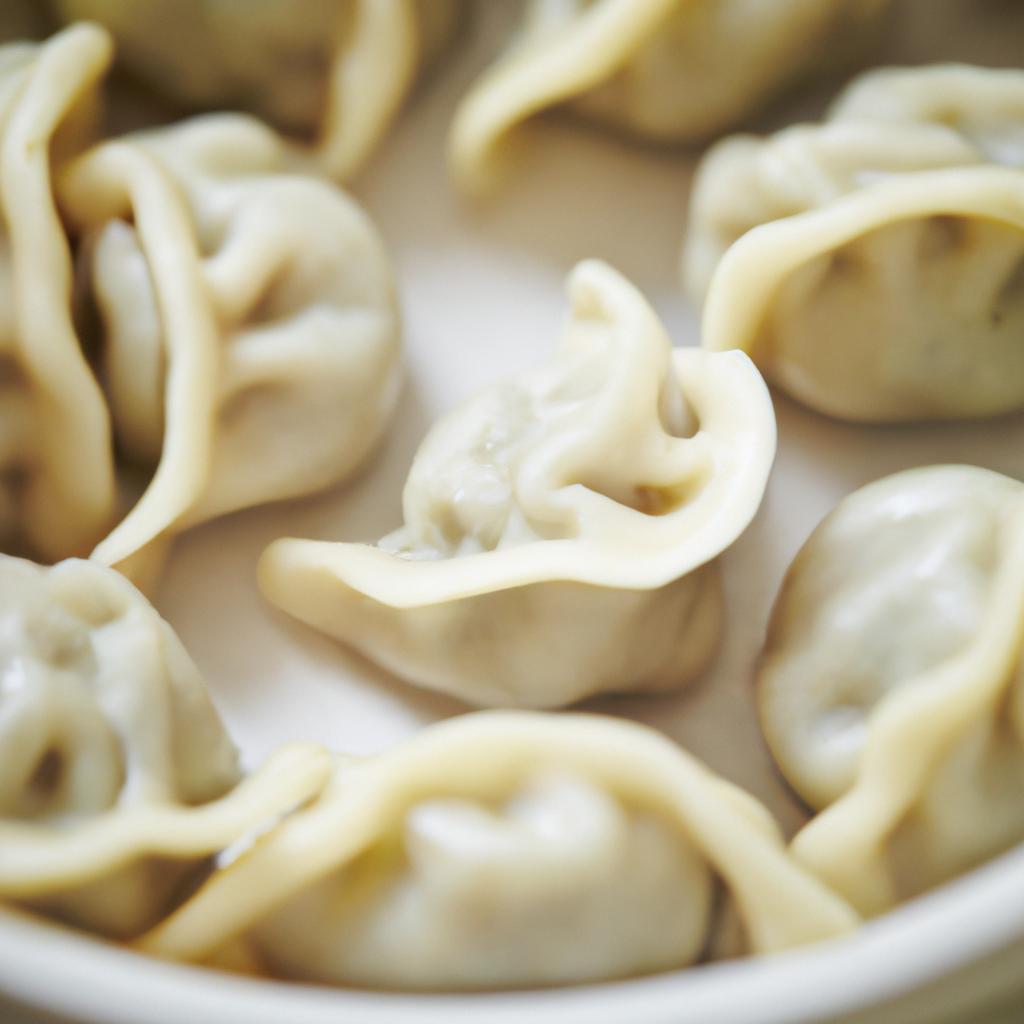Mandu dumplings

Korean cuisine is renowned for its unique blend of spices, bold flavors, and textures that tantalize the taste buds. Among the most popular dishes in Korean cuisine are mandu dumplings. These delicious dumplings are commonly consumed throughout Korea as a snack or side dish, and they are also served as a main course, especially during special occasions.
Korean mandu dumplings come in different varieties, but they all share a similar characteristic in the use of starchy dough and scrumptious fillings. The dough used for making mandu dumplings is typically made from wheat flour or rice flour, which is mixed with water, salt, and egg to form a pliable dough. The filling, on the other hand, can include various meat and vegetable components, and it is more often than not, flavored with spices and seasonings to make it more enticing.
The origin of mandu dumplings dates back to the Goryeo Dynasty (918–1392) in Korea’s history. The dish was originally brought to Korea from China, where it was known as jiaozi, and it has since evolved into a popular snack that is enjoyed across the country. The name mandu is thought to have originated from the Chinese word mantou, which means steamed buns.
One of the reasons why mandu dumplings are so popular in Korea is because of their versatility. They can be prepared in several ways, including steaming, frying, and boiling, and can be served as a snack or a full meal. Additionally, the fillings can be varied depending on the region of Korea and personal preference. Some popular mandu dumpling fillings include ground beef, pork, chicken, tofu, shiitake mushrooms, and kimchi.
Making mandu dumplings can be quite adventurous, especially if you’re not used to working with dough. However, with a little practice, anyone can make delicious and savory mandu dumplings from the comfort of their own home. To start, one needs to prepare the dough by mixing wheat flour or rice flour with water, salt, and egg until a smooth and pliable dough is formed. The dough should be left to rest for about 30 minutes before being rolled into small circles.
The filling is the most important part of making mandu dumplings because it determines the flavor and texture of the final product. When making the filling, the meat and vegetables should be chopped into small chunks and mixed with spices and seasonings. The filling should be moist enough to stick together when wrapped in the dough without falling apart.
After preparing the dough and filling, the next step is to wrap the filling in the dough. This is done by placing a small amount of filling in the center of the dough circle and folding it over to create a half-moon shape. The edges of the dough should be sealed by pinching them together to prevent the filling from escaping.
Once the mandu dumplings are filled and sealed, they can be steamed, boiled, or fried depending on personal preference. Steaming is the healthiest option as it preserves the nutritional value of the fillings. Boiling is also a popular option as it gives the dumplings a unique texture that combines chewiness and softness. Frying is a less healthier option but gives the dumplings a crispy texture that many enjoy.
In conclusion, mandu dumplings are a beloved dish in Korean cuisine that is enjoyed by people of all ages. The dish’s versatility, unique taste, and easy preparation method make it a favorite snack or meal in households across Korea and beyond. Whether you like them steamed, boiled, or fried, mandu dumplings are a great addition to any food lover’s repertoire.
Ingredients:
- 1 package of mandu dumpling wrappers
- 1 pound of ground pork
- 1 cup of chopped kimchi
- 1 cup of chopped scallions
- 1 tablespoon of sesame oil
- 1 tablespoon of soy sauce
- 1 tablespoon of rice vinegar
- 2 cloves of minced garlic
- 1 teaspoon of grated ginger
- 1 egg
Instructions:
- In a large mixing bowl, combine the ground pork, kimchi, scallions, sesame oil, soy sauce, rice vinegar, garlic, ginger, and egg. Mix thoroughly.
- To assemble the dumplings, take one mandu wrapper and place a tablespoon of the filling in the center. Wet the edges of the wrapper with water and fold in half, pressing the edges together to seal. Continue with the remaining wrappers and filling.
- To cook the dumplings, bring a pot of water to a boil. Carefully add the dumplings to the pot, making sure they don’t stick. Cook for 3-4 minutes until they float to the surface.
- Remove the dumplings with a slotted spoon and serve hot with soy sauce or gochujang (Korean red pepper paste) for dipping. Optional: you can pan-fry the dumplings after boiling for a crispy texture. Heat a tablespoon of oil in a non-stick pan on medium heat, add the dumplings and cook until browned on both sides. Serve hot and enjoy!